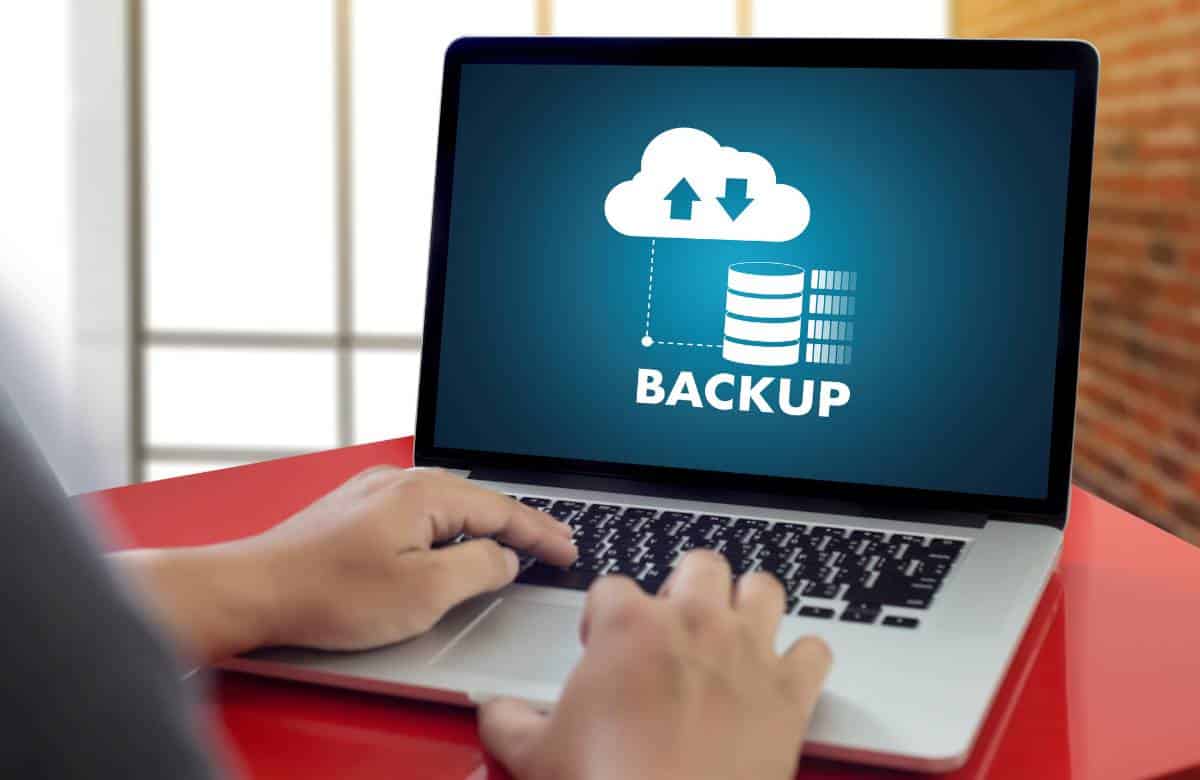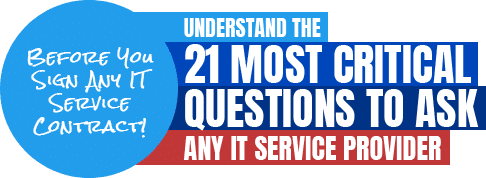
Growing data volumes are driving an exponential demand for backup facilities that can meet both the storage and security needs of corporate applications. Modern-day cloud backup solutions offer advanced capabilities, increased agility, flexibility, and scalability beyond what’s possible with legacy storage.
Still, several corporate managers are holding back on deployment and the reasons range from “reasonable” to utterly “ludicrous”. Regardless, these are legitimate concerns, and opting to forego cloud backup solutions altogether could have profound implications on your day-to-day. In this article, we debunk the most dangerous myths about cloud data backup to help business leaders make informed decisions void of inaccurate presumption.
Myth# 1. Cloud Backups are 100% Secure. Besides, the Burden of Ensuring Security is Borne By the Provider
This couldn’t be further from the truth. Cloud backups, SaaS software products, and the data they produce are vulnerable and can be breached. Studies reveal that 81% of organizations have had their sensitive SaaS data exposed. Cloud providers have an obligation to protect their product from attacks and safeguard their infrastructure from being compromised.
In the same light, securing the data generated and stored on cloud backups is your organization’s sole responsibility. Leading SaaS solutions like Office 365, Google Workspace, and Salesforce are known to have top-of-the-line security; still, they aren’t completely protected against all sorts of threats. Human error is a leading cause of data loss and corruption alongside malicious insiders and external threat actors.
Weighing the stakes, it would make sense to hire security-oriented managed IT specialists with a knack for alleviating the latest cybersecurity threats to your cloud backup. MSPs go far and beyond basic routine backup maintenance. They provide proactive monitoring and prevent ransomware (among other types of threats) from impeding your business operations.
Myth #2. Cloud Backups Cost More than In-House Backup Solutions
The issue of cloud cost is and has always been controversial. Many experts have come to agree that cloud backup solutions can have an impact on your company’s bottom line in one way or another.
There are solid reasons to believe that cloud solutions, while highly effective, can be costly from an acquisition perspective. All this boils down to your industry, business size, and data storage needs. On the one hand, small organizations see higher returns in quality products, services, and efficient processes when all pertinent data is stored and readily accessible in the cloud.
Larger organizations are able to cut out the high cost of downtime which can range from a couple thousand to millions of dollars. All factors considered, once cloud backups are deployed, CIOs no longer have to worry too much about:
- New storage equipment purchases and expensive, periodic hardware repairs. Quite frankly, it costs upward of $20,000 for on-premises servers. This cost does not take into account the possible incidental charges, delivery, payment processing, user support, and installation fees.
- Fresh installation and configuration hurdles can be complex for less tech-savvy business managers. MS servers, for example, are notoriously known for their difficult setup process.
- Labor-intensive workloads stemming from the absence of fast and efficient storage and infrastructure. Many companies that have turned to cloud solutions have experienced cost savings in the form of efficient systems supporting operations while saving precious time that could have been drained into nuanced procedures.
Cloud backups are considered an investment like any other from a long-term point of view. Foregoing the technology can cost more in the long run when you factor in the costs of damaged and poorly maintained on-premise backups. Often, heavy reliance on traditional backup systems can result in loss of revenue, market share loss, and – the most painful one yet – lost customer trust, when they fail in the middle of a crisis.
Myth #3. The False Sense of Security in That Lost Data Can Always Be Recovered
Without some kind of backup, lost data is gone for good. Some cloud backup providers may be able to restore accidental deletions from their end upon request. However, their ability to detect changes to the data during this time is limited.
It should be understood that having cloud data backups is only half the solution. The other half lies in your business continuity and disaster recovery (BCDR) strategy. BCDR planning ensures that operations resume as fast and efficiently as possible during and immediately after an incident. Your business continuity and disaster recovery plan also recognizes the dynamics surrounding a frantic disaster period. It outlines the duties involved in your response and recovery effort so that everyone knows their role in keeping the business running.
Cloud or on-premise, it’s important to test backups long before actual or human-induced disaster. If data backup and disaster recovery planning isn’t one of your strong areas, consider soliciting the services of a mature managed IT provider whose specialty is helping businesses like yours develop and implement a solid disaster recovery plan.
Myth #4. Moving Essential System and Application Files to a Cloud Backup Relinquishes Control to the Vendor

Given the old approach of data storage, it makes sense why business owners may feel skeptical and apprehensive about deploying cloud-based data backups. Risk-averse business managers often tend to prefer backup solutions that they are in control of.
It is worth pointing out that most of the client data stored on vendor data backups is kept separate from other clients’ data. With stringent access controls in place, cloud backup providers can offer solid assurance that only you have access to your data.
Granular control can be further provided through data segregation. Here, your data is separated across various criteria (e.g. attributes or categories), so that different rules and control measures can be applied for certain (sensitive) data.
Myth #5. One Backup is Enough
Reliance on one cloud backup could pose serious risks if hackers were to gain access or if the stored copies of your data were to fail when you needed them the most. To be fair, most cloud backup vendors store client data in several locations to disperse the risk of loss. However, it wouldn’t hurt to stick to the 3:2:1 rule.
This involves keeping three copies of data; the original and two copies. One copy should be kept on at least two different storage media. The other copy should be stored far away from your premises to mitigate the risks, should a disaster compromise your infrastructure.
Some organizations endorse a multi-cloud backup strategy. While this is still in its infancy, the use of multiple cloud providers can greatly enhance data protection and business resilience. However, adopting multi-cloud strategies has been met with compliance and security challenges that should be factored into the equation.
Are Cloud Backup Solutions Worthy of the Investment?
By now, it’s clear that cloud backup solutions are worth the investment considering the following advantages:
- Flexible subscription payments – Since cloud backups and services are usually deployed on a subscription basis, the expenses become predictable. New equipment purchases become near obsolete, which further eases the pressure on your IT budget. SLAs and subscriptions can be implemented and terminated with relative ease.
- East customization – Cloud backups can be customized to serve specific niche needs. Allocated storage, performance, efficiency, and other features can be tailored to match your company’s needs and in support of your long-term goals.
- Ready accessibility – Since cloud applications are delivered through the internet, it becomes easy to access them at any time as long as there exists an internet connection. New copies of vital data can be transferred and retrieved through the internet from anywhere around the world with an internet-capable device.
Despite these benefits, there are some downsides that should be considered before making the investment:
- Difficulty in switching vendors – Sometimes, switching to new providers may involve massive amounts of data and incompatible systems that business managers and in-house IT departments would prefer not to deal with.
- Issues beyond customer control – Cloud storage providers may roll out updates to their products and services as part of their compliance obligation; updates which customers may not willingly embrace.
With these factors in mind, key decision makers find it easier to know what to look for while considering cloud backup solutions.
Conclusion
Settling for the right cloud backup provider is often met with a number of challenges that in-house departments may not be well equipped to address. BoomTech’s cloud service is built to suit a diverse portfolio of needs, from remote file access to regular data backup. Our priority is to ensure that your business’s data remains secure and recoverable in the face of disaster, ransomware, and related challenges.
Categories
Hear from Philipp Baumann, owner and founder of BoomTech:


